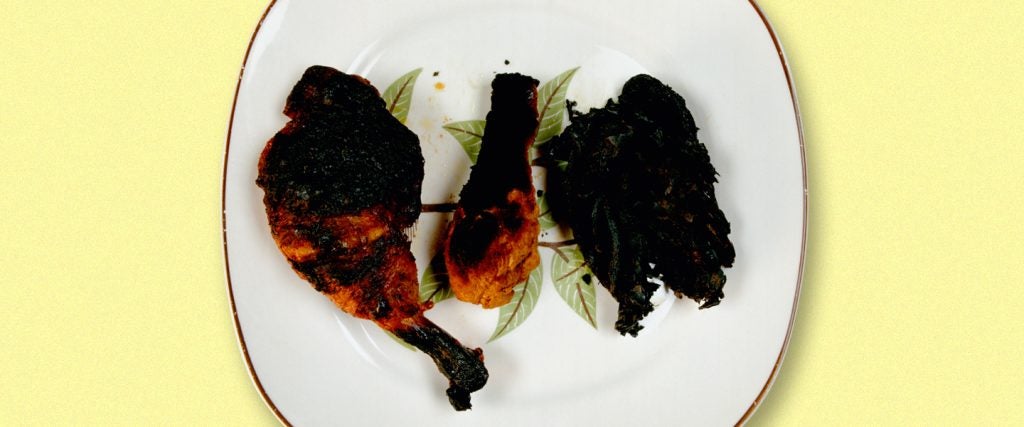Being married to a registered dietitian is a precious gift and an eternal curse. The gift is that you always have someone around to advise you as to when you’re making horrible decisions with respect to food consumption. The curse is that many of your eventual meal selections will come at a steep price — and by “price,” I’m literally referring to the price you paid at the grocery store for all of the food that you’re going to end up throwing away. That’s because dietitians are highly skeptical about relying on food to sustain its structural integrity without trying to kill you after you consume it.
The instant your store-bought six-pack of filet mignon is deemed to have been left out in the unrefrigerated air one nanosecond too long, most dietitians are prone to chuck your entire collection of prime beef cuts in the trash. To these well-educated but deeply paranoid people, eliminating the temptation to eat potentially contaminated food is one of the surest paths to avoiding food poisoning.
Can I show them, and avoid food poisoning by superheating or overcooking food that’s gone bad?
When we’re discussing the causes of most food spoilage, we’re usually referencing the microbial spoilage caused by microorganisms and bacteria. Storing food at the proper temperature — typically through refrigeration — substantially slows the rate of bacterial growth within it.
Any perishable foods will eventually go bad; there are no two ways about it. But if you cook your food early enough, heating it will be sufficient to kill the bacteria within it. However, the bacteria will eventually produce toxins that are heat-resistant, and that can’t be killed no matter how high you crank your oven. Simply put, if your food is in a borderline state of edibility, there’s at least a marginal chance you won’t be able to scorch all of the deleterious chemicals out of it without converting it into a pile of ash.
But what if the food was already cooked and then I left it out? Does that change anything?
Not enough to make a difference.
If the food has already been cooked, it’s in a decaying state. Once it’s left out, it will lead to the development of carcinogens and other deadly chemicals that are resistant to heat, all of which is only accelerated by the time the food has been left sitting out at room temperature. Again, no matter how much it may pain you to take what was once a perfect New York strip steak and skyhook it into the garbage can, that pain may be only a fraction of what could await you if you think you can blast the illness-causing toxins out of that festering meat mound.
How bad can food poisoning really be?
Are we seriously about to have this conversation?
The definition of poison is “a substance that through its chemical action usually kills, injures or impairs an organism.” Depending on the severity of the food poisoning you experience, it may be capable of inflicting all three awful outcomes upon you. For certain, most food poisoning manifests in the form of cramping, nausea, vomiting and diarrhea. But things have been known to turn more serious, too, with foodborne bacteria potentially bringing around bouts of severe dehydration, kidney damage or brain damage. And although the overwhelming majority of food-illness episodes reach their conclusion within 48 hours, the CDC reports that 3,000 of the 48 million Americans who suffer through a round of food poisoning each year ultimately die as a result of it.
It doesn’t really seem like a reheated piece of beef is worth dying over.
Right you are.
Nevertheless, if you still insist on eating that steak, the most reliable way to ensure that you’ve killed as many disease-causing bacteria as possible while still leaving something reasonably tasty on your plate is by cooking your food until its core temperature reaches 170 degrees Fahrenheit. This means that if you do decide to prepare that pre-warmed cut of filet mignon for consumption, you need to roast it well into the well-done range.
It might be quite a bit tougher than you prefer, but it also won’t come with a side of volcanic diarrhea (or worse) either.

